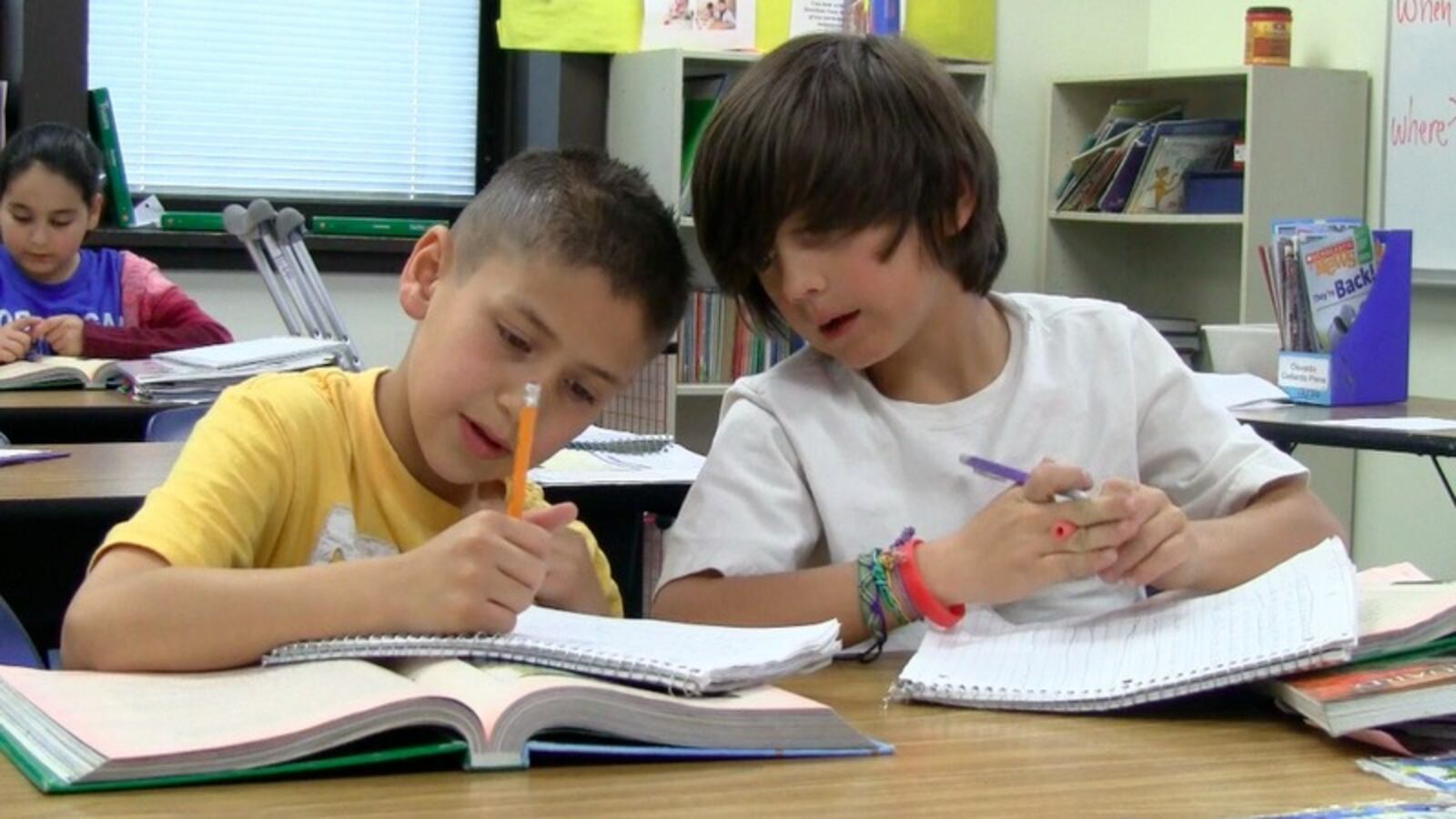The Boulder Valley School District serves a largely affluent population with highly educated parents. In Sterling on the Eastern Plains, fewer than 1 in 6 adults has a bachelor’s degree. But both the Boulder district and the Valley Re-1 district serving Sterling send a large portion of their graduates to college, and few of them need remediation classes when they get there.
Those are just two of the findings in a new report from the Denver-based education reform advocacy group A Plus Colorado that examines both exemplary and struggling districts. A Plus focuses on data analysis to drive public support for policy changes. This is the second year that A Plus has released “The Outliers,” which is intended to help educators find models to emulate.
The report notes success stories like DSST: Stapleton High School, part of the Denver-based charter network, which posted the state’s highest average SAT scores for white students, black students and students from low-income families. Its Hispanic students also posted SAT scores that were among the highest in the state.
Among the report’s nuanced findings, the tiny Sheridan district south of Denver sends relatively few students to college, with many later needing remediation. But the district has made big strides in the graduation rate of homeless students, who make up 25 percent of its students. In 2016, 64 percent of its homeless students graduated, compared with 53 percent for the state and 42 percent in Denver.
Here are four takeaways from the report:
The numbers only tell so much.
The report shows schools where students from low-income families — as measured by free- and reduced-price lunch rates — do well on elementary math tests or middle school language arts, and where Hispanic students graduate at high rates or have good SAT scores. However, it doesn’t explain just how those schools succeed.
CEO Van Schoales said A Plus Colorado isn’t able to visit all districts and schools to research what they’re doing right, but he hopes the report can still be a resource for principals and superintendents.
“Folks need to spend the time to get to understand the places where most kids are getting to standards or graduating or showing growth,” he said. “There can be an echo chamber in education around the cool places or what’s hot. This report is the data. There are a lot of places doing great work.”
Small districts are just as capable of serving at-risk students as large ones.
The first year of “The Outliers” only looked at the 76 districts serving at least 1,000 students. This year, the report looks at roughly 120 districts with publicly available data. Small districts are more likely to be outliers in both good and bad ways. With fewer students overall, it doesn’t take many students to significantly boost or drag down achievement percentages.
The researchers found small school districts serving low-income and diverse student populations and getting good outcomes.
“A lot of school districts think that the bigger you are, the more capacity you have and the more good you can do, and our report shows that that is not necessarily true,” Schoales said. “You can find school districts doing well by low-income kids all over Colorado and ones that are not.”
Online schools need a lot more scrutiny.
The report found that students in online schools do worse even than students in low-performing brick-and-mortar schools, and that when districts open online schools, it pulls down districtwide performance.
The Byers district east of Denver, where 82 percent of students attend online schools, and Colorado Digital BOCES, a cooperative collection of online schools, showed some of the lowest academic growth in the state, the report found.
“In theory, it sounds great,” but most online schools are not working for their students, Schoales said.
This is not a new concern. A 2016 investigation by Education Week raised serious questions about the operation of GOAL Academy online schools. But the sector continues to expand, with A Plus calling it “one of the fastest growing segments within the Colorado educational ecosystem.”
Colorado suppresses so much student data that it’s hard to get a complete picture.
Colorado has strict data privacy rules that lead to the suppression of student achievement information from small batches and sometimes even larger groups of students. As a result, A Plus Colorado said it doesn’t know whether the 300 black students in the Boulder Valley School District or the 366 students in Manitou Springs who qualify for free- and reduced-price lunch are meeting grade-level expectations.
That’s because the state redacts scores whenever fewer than four students score at a particular proficiency level, and then shields additional scores from other groups and even other schools to further obscure the data.
A Plus says this 3-year-old policy makes it impossible to discern how certain groups of students are performing.
Complete test data is available to district officials, but Schoales said that’s not good enough. If they and the public can’t compare among school districts, they don’t know how much better they could be doing.
“The public and policy makers need to know what’s working and where we can learn from,” Schoales said.
Read the rest of the report, with lots of district- and school-level information, here:

